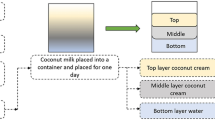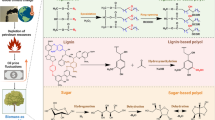Abstract
Lipases are a group of enzymes of considerable significance in organic synthesis, among which Candida antarctica lipase B (CALB) is one of the most widely studied enzymes. The activity of the biocatalyst has been intensively characterized in many organic media, but this paper aimed to compare the effect of 20 different solvents on the activity of CALB in the hydrolysis of p-nitrophenyl laurate. Nonpolar, polar aprotic, and polar protic solvents were used for enzyme pretreatment and then entered the composition of mixed solvents reaction medium. An impact of solvents on solvation processes affecting the catalysis steps, protein denaturation, and changes of its conformation was discussed. Moreover the hydrolytic activity of CALB with partition coefficient (logP) of the solvent used was correlated. It was emphasized that the substrate solubility plays an important role in solvent selection. In the presence of hydrophobic solvents, hydration layer becomes more hydrophobic facilitating the substrate access to the enzyme surface. In turn, polar compounds are good solvents for organic substrates facilitating the penetration of the aqueous layer that surrounds the surface of the enzyme. Two variants proved to be favorable for ester hydrolysis reaction: isooctane or polar solvent such as acetone, tert -butyl methyl ether, tert-butanol or acetonitrile.






Similar content being viewed by others
References
Johannes T, Simurdiak MR, Zhao H (2006) Biocatalysis. In: Lee S (ed) Encyclopedia of chemical processing. Taylor & Francis Group, New York.
Uppenberg J, Hansen MT, Patkar S, Jones TA (1994) The sequence, crystal structure determination and refinement of two crystal forms of lipase B from Candida antarctica. Structure 2(4):293–308. https://doi.org/10.1016/S0969-2126(00)00031-9
Höck H, Engel S, Weingarten S, Keul H, Schwaneberg U, Möller M, Bocola M (2018) Comparison of Candida antarctica lipase B variants for conversion of ε-caprolactone in aqueous medium—Part 2. Polymers 10(5):524. https://doi.org/10.3390/polym10050524
Kundys A, Białecka-Florjańczyk E, Fabiszewska A, Małajowicz J (2018) Candida antarctica lipase B as catalyst for cyclic esters synthesis, their polymerization and degradation of aliphatic polyesters. J Polym Environ 26:396–407. https://doi.org/10.1007/s10924-017-0945-1
Rosset IG, Cavalheiro MCHT, Assaf EM, Porto ALM (2013) Enzymatic esterification of oleic acid with aliphatic alcohols for the biodiesel production by Candida antarctica lipase. Catal Lett 143:863–872. https://doi.org/10.1007/s10562-013-1044-0
Wang B, Zhang C, He Q, Qin H, Liang G, Liu W (2018) Efficient resolution of (R, S)-1-(1-naphthyl)ethylamine by Candida antarctica lipase B in ionic liquids. Mol Catal 448:116–121. https://doi.org/10.1016/j.mcat.2018.01.026
Saik AYH, Lim YY, Stanslas J, Choo WS (2017) Enzymatic synthesis of quercetin oleate esters using Candida antarctica lipase B. Biotechnol Lett 39:297–304. https://doi.org/10.1007/s10529-016-2246-5
Stevenson DE, Wibisono R, Jensen DJ, Stanley RA, Cooney JM (2006) Direct acylation of flavonoid glycosides with phenolic acids catalysed by Candida antarctica lipase B (Novozym 435®). Enzyme Microb Technol 39(6):1236–1241. https://doi.org/10.1016/j.enzmictec.2006.03.006
Kapturowska AU, Stolarzewicz IA, Krzyczkowska J, Białecka-Florjańczyk E (2012) Studies on the lipolytic activity of sonicated enzymes from Yarrowia lipolytica. Ultrason Sonochem 19(1):186–191. https://doi.org/10.1016/j.ultsonch.2011.06.015
Sangster J (1989) Octanol-water partition coefficients of simple organic compounds. J Phys Chem Ref Data 18(3):1111–1227. https://doi.org/10.1063/1.555833
Murov SL (2018) Properties of solvents used in organic chemistry. https://murov.info/orgsolvents.htm. Accessed 26 June 2019
Reichardt C, Welton T (2010) Appendix A. properties, purification, and use of organic solvents. In: Reichardt C, Welton T (eds) Solvents and solvent effects in organic chemistry. Wiley, Weinheim
Jaeger KE, Ransac S, Dijkstra BW, Colson C, van Heuvel M, Misset O (1994) Bacterial lipases. FEMS Microbiol Lett 15:29–63. https://doi.org/10.1016/0168-6445(94)90025-6
Matsumoto M, Kida K, Kondo K (2001) Enhanced activities of lipase pretreated with organic solvents. J Chem Technol Biotechnol 76(10):1070–1073. https://doi.org/10.1002/jctb.491
Aguieiras ECG, Ribeiro DS, Couteiro PP, Bastos CMB, de Queiroz DS, Parreira JM, Langone MAP (2016) Investigation of the reuse of immobilized lipases in biodiesel synthesis: influence of different solvents in lipase activity. Appl Biochem Biotechnol 179:485–496. https://doi.org/10.1007/s12010-016-2008-9
Liu Y, Zhang X, Tan H, Yan Y, Hameed BH (2010) Effect of pretreatment by different organic solvents on esterification activity and conformation of immobilized Pseudomonas cepacia lipase. Process Biochem 45:1176–1180. https://doi.org/10.1016/j.procbio.2010.03.023
Lotti M, Pleiss J, Valero F, Ferrer P (2015) Effects of methanol on lipases: molecular, kinetic and process issues in the production of biodiesel. Biotechnol. J. 10:22–30. https://doi.org/10.1002/biot.201400158
Yang Z, Russel AJ (1996) Fundamentals of non-aqueous enzymology. In: Koskinen A, Klibanov A (eds) Enzymatic reactions in organic media. Springer, Netherlands
Du W, Xu Y, Zeng J, Liu D (2004) Novozym 435-catalysed transesterification of crude soya bean oils for biodiesel production in a solvent-free medium. Biotechnol Appl Biochem 40:187–190. https://doi.org/10.1042/BA20030142
Samukawa T, Kaieda M, Matsumoto T, Ban K, Kondo A, Shimada Y, Noda H, Fukuda H (2000) Pretreatment of immobilized Candida antarctica lipase for biodiesel fuel production from plant oil. J Biosci Bioeng 90(2):180–183. https://doi.org/10.1016/S1389-1723(00)80107-3
Graber M, Irague R, Rosenfeld E, Lamare S, Franson L, Hult K (2007) Solvent as a competitive inhibitor for Candida antarctica lipase B. Biochim. Biophys. Acta 1774:1052–1057. https://doi.org/10.1016/j.bbapap.2007.05.013
Kumar A, Dhar K, Kanwar SS, Arora PK (2016) Lipase catalysis in organic solvents: advantages and applications. Biol Proced Online 18:2. https://doi.org/10.1186/s12575-016-0033-2
Garcia-Alles L, Gotor V (1998) Alcohol inhibition and specificity studies of Lipase B from Candida antarctica in organic solvents. Biotechnol Bioeng 59(2):163–170. https://doi.org/10.1002/(SICI)1097-0290(19980720)59:2%3c163:AID-BIT4%3e3.0.CO;2-F
Ingenbosch KN, Rousek A, Wunschik DS, Hoffmann-Jacobsen K (2019) A fluorescence-based activity assay for immobilized lipases in non-native media. Anal Biochem 569:22–27. https://doi.org/10.1016/j.ab.2019.01.005
Roy S, Jana B, Bagchi B (2012) Dimethyl sulfoxide induced structural transformations and non-monotonic concentration dependence of conformational fluctuation around active site of lysozyme. J Chem Phys 136(11):115103. https://doi.org/10.1063/1.3694268
Pleiss J, Fischer M, Schmid RD (1998) Anatomy of lipase binding sites: the scissile fatty acid binding site. Chem Phys Lipids 93:67–80. https://doi.org/10.1016/S0009-3084(98)00030-9
Kim HS, Ha SH, Sethaphong L, Koo Y, Yingling YG (2014) The relationship between enhanced enzyme activity and structural dynamics in ionic liquids: a combined computational and experimental study. Phys Chem Chem Phys 16:2944–2953. https://doi.org/10.1039/c3cp52516c
Stauch B, Fisher SJ, Cianci M (2015) Open and closed states of Candida antarctica lipase B: protonation and the mechanism of interfacial activation. J Lipid Res 56(12):2348–2358. https://doi.org/10.1194/jlr.M063388
Li C, Tan T, Zhang H, Feng W (2010) Analysis of the conformational stability and activity of Candida antarctica lipase B in organic solvents: insight from molecular dynamics and quantum mechanics/simulations. J Biol Chem 285(37):28434–28441. https://doi.org/10.1074/jbc.M110.136200
Faber K (2011) Biotransformations in organic chemistry, 6th edn. Springer, Berlin
Reis P, Holmnerg K, Debeche T, Folmer B, Fauconnot L, Watzke H (2006) Lipase-catalyzed reactions at different surfaces. Langmuir 22:8169–8177. https://doi.org/10.1021/la060913s
Reis P, Watzke H, Leser M, Holmberg K, Miller R (2010) Interfacial mechanism of lipolysis as self-regulated process. Biophys Chem 147:93–103. https://doi.org/10.1016/j.bpc.2010.01.005
Zisis T, Freddolino PL, Turunen P, van Teeseling MCF, Rowan AE, Blank KG (2015) Interfacial activation of Candida antarctica lipase B: combined evidence from experiment and simulation. Biochemistry 54(38):5969–5979. https://doi.org/10.1021/acs.biochem.5b00586
Su E, Wei D (2008) Improvement in lipase-catalyzed methanolysis of triacylglycerols for biodiesel production using a solvent engineering method. J Mol Catal B: Enzym 55:118–125. https://doi.org/10.1016/j.molcatb.2008.03.001
Castillo E, Casas-Godoy L, Sandoval G (2015) Medium-engineering: a useful tool for modulating lipase activity and selectivity. Biocatalysis 1:178–188. https://doi.org/10.1515/boca-2015-0013
Priego J, Ortiz-Nava C, Carrillo-Morales M, Lopez-Munguia A, Escalante J, Castillo E (2009) Solvent engineering: an effective tool to direct chemoselectivity in a lipase-catalyzed Michael addition. Tetrahedron 65:536–539. https://doi.org/10.1016/j.tet.2008.10.103
Cui C, Xie R, Tao Y, Zeng Q, Chen B (2015) Improving performance of Yarrowia lipolytica lipase lip2-catalyzed kinetic resolution of (R, S)-1-phenylethanol by solvent engineering. Biocatal Biotransformation 33(1):38–43. https://doi.org/10.3109/10242422.2015.1018190
Castillo E, Pezzotti F, Navarro A, Lopez-Munguia A (2003) Lipase-catalyzed synthesis of xylitol monoesters: solvent engineering approach. J Biotechnol 102(3):251–259. https://doi.org/10.1016/S0168-1656(03)00050-6
Bellot JC, Choisnard L, Castillo E, Marty A (2001) Combining solvent engineering and thermodynamic modeling to enhance selectivity during monoglyceride synthesis by lipase-catalyzed esterification. Enzyme Microb Technol 28:362–369. https://doi.org/10.1016/S0141-0229(00)00326-4
Sheldon RA, Pereira PC (2017) Biocatalysis engineering: the big picture. Chem Soc Rev 46(10):2678–2691. https://doi.org/10.1039/c6cs00854b
Trodler P, Pleiss J (2008) Modeling structure and flexibility of Candida antarctica lipase B in organic solvents. BMC Struct Biol 8:9. https://doi.org/10.1186/1472-6807-8-9
Author information
Authors and Affiliations
Contributions
BZ and EB-F: conceptualization; BZ: investigation; BZ and AF: methodology; BZ, AF, and EB-F: writing—original draft preparation; EB-F: supervision.
Corresponding author
Ethics declarations
Conflict of interest
The authors declare that they have no conflict of interest. This research did not receive any specific grant from funding agencies in the public, commercial, or not-for-profit sectors.
Additional information
Publisher's Note
Springer Nature remains neutral with regard to jurisdictional claims in published maps and institutional affiliations.
Rights and permissions
About this article
Cite this article
Zieniuk, B., Fabiszewska, A. & Białecka-Florjańczyk, E. Screening of solvents for favoring hydrolytic activity of Candida antarctica Lipase B. Bioprocess Biosyst Eng 43, 605–613 (2020). https://doi.org/10.1007/s00449-019-02252-0
Received:
Accepted:
Published:
Issue Date:
DOI: https://doi.org/10.1007/s00449-019-02252-0




